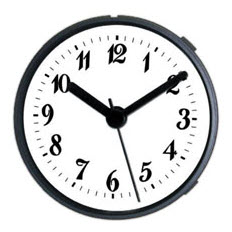Clockmaking with Private Clock Hands as well as Dials
Clock Parts

Clock hands and dials provide one of the most unique aesthetic effect of a wrist watch. Clock dials and also hands function as a team in bringing out style and also tone, and also they aid the onlooker to acquire the moment promptly so long as they are contrasting and well matched. In this article we explore how to achieve a well-matched as well as contrasting set, and also how to ideal portray your preferred appearance.
DIY Clock hands and dials are truly the focal point, as well as it is not surprising that clockmakers devote their efforts to combine them noticeably. This is not to downplay the function of the clock movement in appropriately placing the turn over the face continually. Yet the activity is pure feature as well as stays undetected; style (type) must be drawn out via the visual parts.
Building clocks from scratch entails choosing your own parts, as well as you should strive for an unified, unified appearance. The hands and also dial are the all-natural emphasis, however the overall functionality of the watch needs to be identified first. Consisting of certain functions or uniqueness might have an effect on one or both of these component parts.
There is a wonderful selection of clock movements available, each with a specific mix of features. The vital feature is timekeeping, indicating revealing the current time constantly to whatever extent wanted. That is, though the most usual cycle is twelve hrs (when whatever returns to its starting state), some movements extend the cycle to something much longer, potentially needing a various looking dial and also possibly entailing an added hand.
For instance, you can get a 24-hour movement, cycling once daily instead of twice. The corresponding dial will show an extra dozen numbers, either doubling up with the very first lots or expanded over the circumference; the last format is inaccessible besides large clocks. One movement turns the hour hand twice a day, the other once daily.
Longer cycles are the week and the month. These motions call for adjusted dials that show the days of the week or dates in the month, respectively. An extra hand indicate the corresponding day or day.
Still other movements supply monitoring tide level (for those in seaside settings) or reporting weather condition sensations such as temperature level and humidity. The dials and hands for these are particularly created to collaborate with them, and also might resemble the circular format or may include a solitary hand going back and forth over a restricted range.
As soon as your clock activity is picked, you can transform your interest to the hands and also dials, concentrating on sizes and designs. Dial and also hand sizes must match, naturally, and also their designs ought to be corresponding. Supplying consist of a series of shapes and also colors, and also dial text comes in Arabic or Roman (or icons).
Dial diameter sizes vary from a few inches to perhaps 6 feet (with significant clocks mounted directly on a wall surface as opposed to looking for huge enough cases). As soon as you go above about 14 inches, the minute hand ends up being too hefty for a regular movement to turn. In such situations get a "high-torque" version of the exact same electric motor you have actually selected, and also it should perform correctly.
Provide some thought to whether you desire your clock to have a pre-owned, and also if so, whether you want the ordinary tick-and-stop (distinct) action or a constant, quiet sweep activity. The electric motor should support one action or the various other, and also you can make a decision just not to mount the used if it seems supplementary.
As soon as you grasp the essentials of building wrist watches from parts, you might want to discover other elements such as sounding chimes or reproducing older clocks with oscillating pendulums. But essential clockmaking begins with private clock hands and dials.